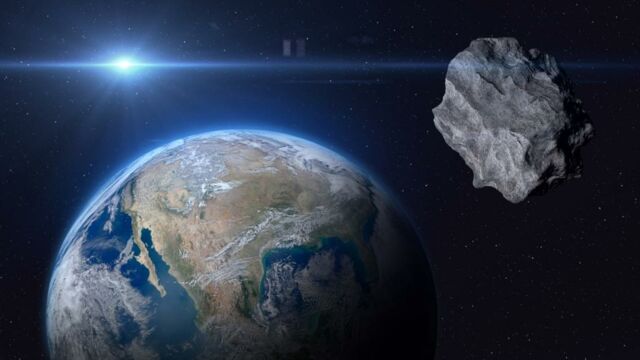Asteroids come and go, but they don't necessarily look alike. We all remember the gigantic asteroid that brought about the end of the dinosaur era some 66 million years ago, but in reality, these celestial objects are numerous and frequently come close to our atmosphere.
Discover our latest podcast
Admittedly, not all asteroids have the capacity of completely destroying our species, but the biggest and most dangerous of them are nevertheless scrutinized by space agencies, especially NASA. Such is the case of Asteroid Aton, the subject of our article today.
Asteroid Aton 467336 (2002 LT38)
On its website, NASA lists the most notable asteroids, i.e. those that will pass within striking distance of our planet. Among these approaching celestial objects, one stands out: asteroid 467336 (2002 LT38). This one's not exactly new. It was first observed on June 10, 2002 at the Lincoln Laboratory Experimental Test Site in New Mexico, USA.
What makes it special? Well, it is its imposing size. According to NASA estimates, this behemoth measures 240 meters, or around 2 times the length of a football field.
Read more:An asteroid 5 times bigger than the Empire State Building will graze the Earth
Does this potentially dangerous celestial object pose a risk to us?
NASA not only lists the asteroids it considers potentially dangerous, it also indicates how close they will come to us. Here we learn that asteroid 467336 (2002 LT38) will be close to Earth on June 24. But 'close'is in quotation marks, as this asteroid will pass within 6.6 million kilometers of our beloved blue planet.
As a reminder, an asteroid is considered 'potentially dangerous' when it measures more than 150 meters and passes within at least 7.5 million kilometers of us.
アテン型の潜在的に危険な #小惑星 (PHA) (467336) = 2002 LT38が2023年6月25日3時28分頃(JST)に地心から約666万km(月までの距離の約17倍)まで接近します. この小惑星は2002年6月に米国,ニューメキシコのLINEARで発見, 推定直径は200-450mです. https://t.co/6WYz2ft6vMhttps://t.co/1s9ZZnXJpXpic.twitter.com/6JWl2c50dc
— Atsuo ASAMI 浅見敦夫 (@AsamiAtsuo) June 15, 2023
Read more:Never-seen-before 7.6 kg meteorite discovered in Antarctica (PHOTOS)
This article has been translated from Gentside FR.
Sources used:
NASA















